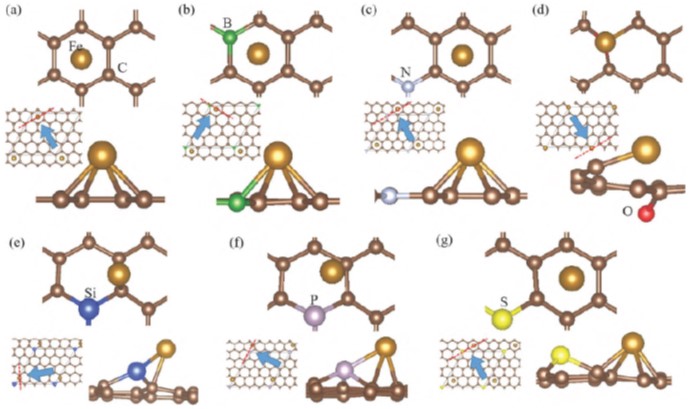- 著者
- Shohei Kataoka Daigo Yagishita Kyoichiro Yazaki Miwa Kanai Shun Hasegawa Morio Shoda Junichi Yamaguchi
- 出版者
- The Japanese Circulation Society
- 雑誌
- Circulation Journal (ISSN:13469843)
- 巻号頁・発行日
- pp.CJ-23-0058, (Released:2023-06-21)
- 参考文献数
- 26
Background: The association between the T-peak to T-end interval (Tp-e) and ventricular arrhythmia (VA) events in cardiac sarcoidosis (CS) is unknown. The purpose of this study was to investigate whether Tp-e was associated with VA events in CS patients with implantable cardioverter defibrillators (ICDs) or cardiac resynchronization therapy defibrillators (CRT-Ds).Methods and Results: We retrospectively studied 50 patients (16 men; mean [±SD] age 56.3±10.5 years) with CS and ICD/CRT-D. The maximum Tp-e in the precordial leads recorded by a 12-lead electrocardiogram after ICD/CRT-D implantation was evaluated. The clinical endpoint was defined as appropriate ICD therapy. During a median follow-up period of 85.0 months, 22 patients underwent appropriate therapy and 10 patients died. Kaplan-Meier analysis revealed that the probability of the clinical endpoint was 28.3% at 2 years and 35.3% at 4 years. The optimal cut-off value of the Tp-e for the prediction of the clinical endpoint was 91 ms, with a sensitivity of 72.7% and a specificity of 87.0% (area under the curve=0.81). Multivariate Cox regression analysis showed that Tp-e ≥91 ms (hazard ratio [HR] 5.10; 95% confidence interval [CI] 1.99–13.1; P<0.001) and a histological diagnosis of CS (HR 3.84; 95% CI 1.28–11.5; P=0.016) were significantly associated with the clinical endpoint.Conclusions: Tp-e ≥91 ms was a significant predictor of VA events in patients with CS and ICD/CRT-D.
- 著者
- Kana Miyata Shun Hasegawa Emi Nakajima Yoko Nishizawa Kota Kamiya Hirotaka Yokogawa Subaru Shirasaka Shingo Maruyama Naoto Shibuya Hanae Kaku
- 出版者
- Japanese Society for Plant Biotechnology
- 雑誌
- Plant Biotechnology (ISSN:13424580)
- 巻号頁・発行日
- vol.39, no.2, pp.119-128, 2022-06-25 (Released:2022-06-25)
- 参考文献数
- 36
- 被引用文献数
- 6
In rice, the lysin motif (LysM) receptor-like kinase OsCERK1, originally identified as the essential molecule for chitin-triggered immunity, plays a key role in arbuscular mycorrhizal (AM) symbiosis. As we previously reported, although AM colonization was largely repressed at 2 weeks after inoculation (WAI), arbuscules were observed at 5 WAI in oscerk1 mutant. Conversely, most mutant plants that defect the common symbiosis signaling pathway exhibited no arbuscule formation. Concerning the reason for this characteristic phenotype of oscerk1, we speculated that OsRLK10, which is a putative paralog of OsCERK1, may have a redundant function in AM symbiosis. The protein sequences of these two genes are highly conserved and it is estimated that the gene duplication occurred 150 million years ago. Here we demonstrated that OsCERK2/OsRLK10 induced AM colonization and chitin-triggered reactive oxygen species production in oscerk1 knockout mutant as similar to OsCERK1. The oscerk2 mutant showed a slight but significant reduction of AM colonization at 5 WAI, indicating the contribution of OsCERK2 for AM symbiosis. However, the oscerk2;oscerk1 double-knockout mutant produced arbuscules at 5 WAI as similar to the oscerk1 mutant, indicating that the redundancy of OsCERK1 and OsCERK2 did not explain the mycorrhizal colonization in oscerk1 at 5 WAI. These results indicated that OsCERK2 has a potential to regulate both chitin-triggered immunity and AM symbiosis and at least partially contributes to AM symbiosis in rice though the contribution of OsCERK2 appears to be weaker than that of OsCERK1.
2 0 0 0 OA Adsorption and Diffusion Properties of a Single Iron Atom on Light-Element-Doped Graphene
- 著者
- Shun Hasegawa Yuji Kunisada Norihito Sakaguchi
- 出版者
- The Japan Society of Vacuum and Surface Science
- 雑誌
- e-Journal of Surface Science and Nanotechnology (ISSN:13480391)
- 巻号頁・発行日
- vol.16, pp.193-200, 2018-05-25 (Released:2018-05-25)
- 参考文献数
- 38
- 被引用文献数
- 4
In this study, we calculated the diffusion of an Fe atom on graphene and various light-element (B, N, O, Si, P, and S)-doped graphene supports, using first-principles calculations based on density functional theory. We focused on dopants that could suppress the detachment and diffusion of an Fe atom. Such doped graphene supports would have strong potential in high-durability fuel cell catalysts and hydrogen storage materials. The Fe atom adsorbs on pristine graphene via ionic bonding. The bonding between the Fe atom and pristine graphene is very weak, and it has a low adsorption energy of −0.61 eV. Doped graphene contains unoccupied localized orbitals. B-, O-, Si-, and P-doped graphene show high adsorption energies of −1.70 eV, −2.70 eV, −1.46 eV, and −1.38 eV, respectively. Thus, these graphene supports could suppress the detachment of Fe nanoclusters and nanoparticles. We demonstrate that these doped graphene supports with high adsorption energies also have high diffusion barriers, which suppresses the agglomeration of Fe nanoclusters and nanoparticles. We conclude that B-, O-, Si-, and P-doped graphene are promising supports for enhancing the adsorption lifetime of Fe nanoclusters and nanoparticles. [DOI: 10.1380/ejssnt.2018.193]
